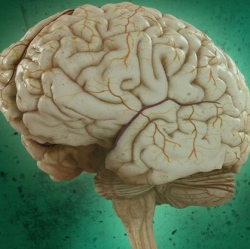
Electrodes implanted deep in the brain of a boy with severe autism have enabled him to live a more normal life. The treatment reduced his destructive behavior and allowed the formerly nonverbal boy to speak a few words, scientists report online January 21 in Frontiers in Human Neuroscience.
The results are the first to use brain stimulation to alleviate symptoms of autism. Scientists caution that interpreting the results broadly is impossible without larger, systematic studies, but even so neurosurgeon Ali Rezai of the Ohio State University Wexner Medical Center in Columbus calls the boys’ gains “intriguing and promising.”
Researchers have become increasingly interested in deep brain stimulation, a technique in which surgically implanted electrodes act as brain pacemakers. For the last two decades, deep brain stimulation has found use treating movement disorders such as the tremors that accompany Parkinson’s disease. More recently, scientists have begun experimenting with the technique to treat behavioral and mental problems, including depression, obsessive-compulsive disorder and severe anxiety.
The boy in the study, who was 13 at the time of his experimental surgery, suffered from severe autism symptoms: He couldn’t talk or make eye contact, woke up screaming repeatedly during the night, and habitually injured himself so badly that His parents restrained him almost constantly to protect him. Multiple rounds of psychiatric drugs failed to stave off his worsening symptoms.
In an effort to help him, doctors led by Volker Sturm of the University Hospital of Cologne in Germany implanted electrodes into the boy’s brain. Through trial and error, the doctors realized that stimulating a part of the amygdala, a brain structure important for emotions and memory, improved the boy’s symptoms. Stimulating other brain areas had no effect or worsened his symptoms.
